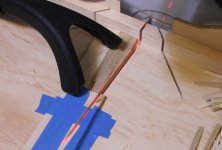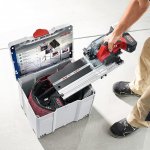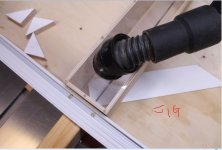berlinguyinca
Member
- Joined
- Aug 11, 2023
- Messages
- 5
Hi,
Random question. I got a TSC55 and the angle thingy (I hate this thing due to lack of accuracy )for the rails about a year ago and now added a parf2 mft top, ct25 and of1400 to the collection aswell as some TSO parallel guides.
So far I'm pretty happy and this replaced more or less most of the tools I actually used in my old shop. Which makes me happy and is pure hobby usage at this point.
Now I'm considering adding a Kapex 60 (dust collection is my main desired feature).
But looking at the TSO offerings, I really like the concepts of the MTR-X and think it could handle everything I would use a miter saw for, while having a smaller footprint and other usability advantages, while saving me 600 dollars.
The one feature I really like about the Kapex, is the ease of cutting lap joints. But I can do this with the router on the mft style top without issues.
Anyone has some ideas if this is feasible?
Any limitations using the MTR over the Kapex for cutting angles? I don't do any molding or so. Maybe cutting some 45 degrees angles once in a while for frames.
Random question. I got a TSC55 and the angle thingy (I hate this thing due to lack of accuracy )for the rails about a year ago and now added a parf2 mft top, ct25 and of1400 to the collection aswell as some TSO parallel guides.
So far I'm pretty happy and this replaced more or less most of the tools I actually used in my old shop. Which makes me happy and is pure hobby usage at this point.
Now I'm considering adding a Kapex 60 (dust collection is my main desired feature).
But looking at the TSO offerings, I really like the concepts of the MTR-X and think it could handle everything I would use a miter saw for, while having a smaller footprint and other usability advantages, while saving me 600 dollars.
The one feature I really like about the Kapex, is the ease of cutting lap joints. But I can do this with the router on the mft style top without issues.
Anyone has some ideas if this is feasible?
Any limitations using the MTR over the Kapex for cutting angles? I don't do any molding or so. Maybe cutting some 45 degrees angles once in a while for frames.



